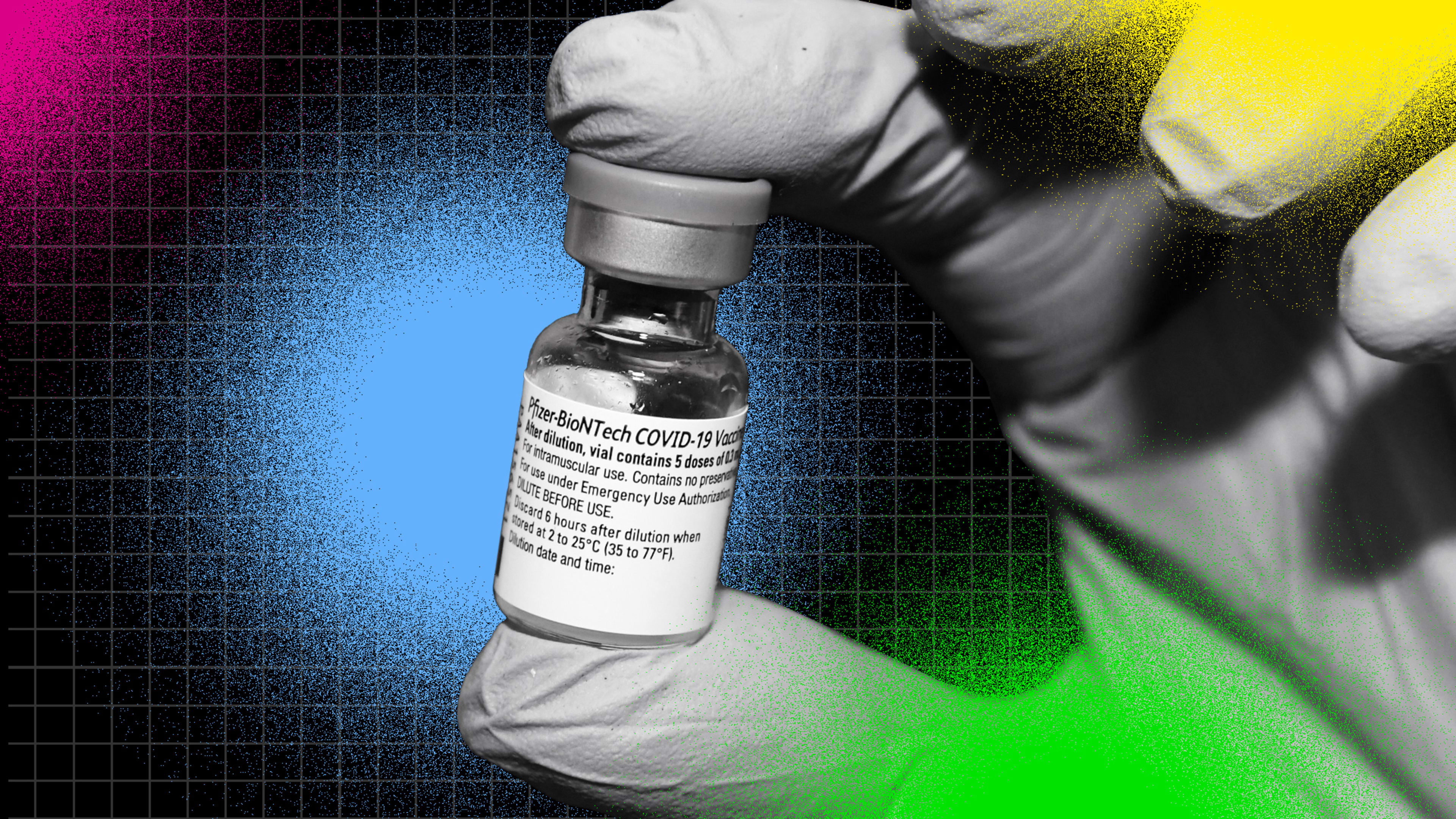Last year, Pfizer was one of several pharmaceutical companies to take on an incredible challenge: make a life-saving vaccine in a fraction of the time it usually takes to do so. Over the course of 2020, Pfizer and others tested vaccine candidates as hundreds of thousands of people died from COVID-19. Pfizer’s success at creating a vaccine with 95% efficacy in record time has landed it, along with its partner BioNTech and fellow vaccine maker Moderna, atop Fast Company‘s Most Innovative Companies list for 2021.
Bourla and Pfizer’s head of vaccine research Kathrin Jansen, joined Fast Company Editor in Chief Stephanie Mehta at the Most Innovative Companies Summit for a conversation about how Pfizer created an effective vaccine so quickly.
“The thing that scientists hate the most is bureaucracy,” says Pfizer CEO Albert Bourla. “Innovation and bureaucracy is oil and water.”
When Pfizer began work on a COVID-19 vaccine, one of the first choices Bourla made was to reduce stop decisions from having to go through multiple layers of approval. He also developed a close and trusting relationship with BioNTech’s CEO Uğur Şahin, with whom Pfizer collaborated on the vaccine.
Albert BourlaInnovation and bureaucracy is oil and water.”
“We had one meeting, we were all there, and we could all decide,” says Bourla. “That meeting was happening twice a week.”
He said this was one of the reasons he decided not to take money from any government for their research. It enabled the company to make decisions at the speed of science, he says. “All of the decision makers came together and we made our decisions on the spot. Everything that could slow us down was put to the side.”
Bourla also listened to his scientists. When Jansen came to him recommending the mRNA platform for the vaccine, he trusted her advice. “mRNA—if we were going to be successful with it—was not going to be the first COVID vaccine. It would be the first [MRNA] vaccine ever,” he says. “But really [Jansen] had the conviction.” In the end, the team had to choose between two vaccine candidates. While one had plenty of data behind it, there was concern there was not enough data on the second candidate. Despite the lack of data, the team made the difficult decision to choose that second candidate, which turned out to be highly effective, driven by recommendations from Jansen and her researchers.
“What we really established is trust,” says Jansen. “Trust that we could bring everything up. That we could be transparent. That we don’t hide anything. We had very open exchanges.”
The other element that helped Pfizer create its vaccine in less than a year was its past investment in digital infrastructure. Prior to the pandemic, Bourla says, the company had begun digitizing its research and development operations and implementing artificial intelligence. During Pfizer’s COVID-19 vaccine clinical trial, it used artificial intelligence software to help find signals within the millions of data points in its 44,000 person study.
“Without that being quite advanced, I don’t think we would [have been] able to do it as quickly as we did,” he said.
That isn’t to say there weren’t bumps in the road. Researchers were working around the clock to bring a vaccine to bear. “By condensing the project from 10 years to one year, it was a test to our mental health. It’s like a roller coaster—[we experienced] moments of unbelievable joy, because something that we thought was impossible [was] becoming possible. [These were] replaced, usually a few hours later, by moments of deep disappointment,” says Bourla.
One recent and more public problem came about during the roll out. When Pfizer sent out vials of vaccines to health systems, it labeled them as containing five doses, which, says Bourla, is what the company had data on. But doctors found out quickly that there was at least an extra dose in the vials. In many cases that extra dose was thrown out, because doctors weren’t sure if they could use it. Bourla said that once the company had full data on the use of a sixth dose it quickly updated its guidance. In this case, the need to get the vaccines out quickly meant that Pfizer and doctors had to sacrifice the efficiency with which the vaccine was deployed.
Speed, of course, has advantages, too. Pfizer has been able to jump start vaccine production and is on track to generate more than two billion vaccine doses this year. Bourla says that the speed with which the company has been able to move has profound implications for the future of medicine. “It would be criminal not to try to use the experience that we have gained during that period and see how we can drastically reform the way that we do research,” he says.
Already Jansen is working on developing vaccines that could combat future COVID-19 variants which may be resistant to the current vaccine. She’s also starting to think about flu season. She wants to adapt the MRNA platform not only to develop a better seasonal flu vaccine, but to prepare for a possible influenza pandemic.
“We’re all pretty certain it will occur,” she says.
Recognize your brand’s excellence by applying to this year’s Brands That Matter Awards before the early-rate deadline, May 3.
